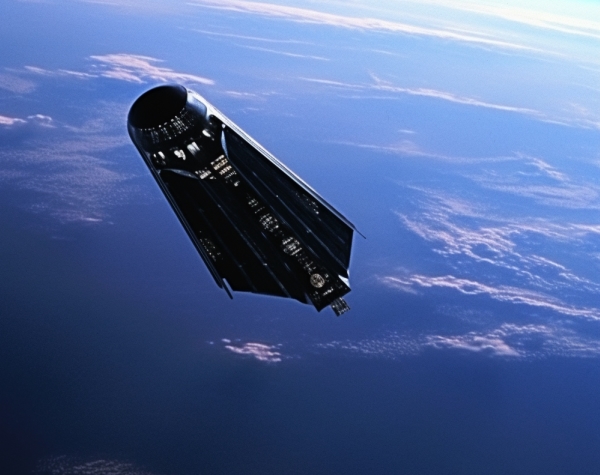Within the vastness of the universe, where enigmatic space mysteries often overshadow comprehension, a celestial enigma engages the intrigue of both scientists and conspiracy theorists.
An unidentified entity, first sighted by space explorers during a December 1998 shuttle mission, presents a puzzle that defies traditional explanation. In a realm dominated by circular satellites and man-made spacecraft, this irregular figure in space’s vastness leaves observers befuddled.
The cosmic puzzle drew attention when the Endeavor space shuttle crew, tasked with constructing the International Space Station, encountered an object that deviated from the expected norm. Its distinct shape and dark hue set it apart from typical cosmic debris, almost as if it were crafted to seamlessly blend into the cosmic expanse.
Imagery captured by the astronauts showcased this mysterious presence, sparking a storm of theories. Some, driven by extraterrestrial curiosity, swiftly labeled it an alien spacecraft or UFO. However, the essence of this celestial entity challenged conventional wisdom.

Satellites typically exhibit spherical or man-made structures. Yet, the enigmatic object in question displayed a myriad of perplexing angles and curved edges seemingly beyond human engineering capabilities.
NASA’s eventual explanation appeared mundane. According to the space agency, this mysterious object was simply a thermal cover that accidentally detached from the space station during construction.
Despite this seemingly clear resolution, doubts lingered. Could a mere thermal cover manifest such a distinctive and puzzling form against the cosmic backdrop?
Enter the Black Knight satellite, a term now synonymous with this mysterious presence in Earth’s orbit. The origins of this moniker remain shrouded in secrecy, evading definitive explanation despite thorough inquiries.
In 1954, a prominent U.S. newspaper ran a story featuring Donald Kehoe, a renowned UFO investigator. Kehoe claimed an extraterrestrial object was maneuvering Earth’s orbit, a product not of human creation.
The Black Knight satellite embodies one of the persistent enigmas of the cosmos, operating as a silent sentinel in space with an undisclosed mission. Yet, the precise nature of this mission remains a captivating unknown.
Rumors suggest it might surveil our planet akin to wildlife documentaries observing creatures in their natural habitat, oblivious to the camera’s presence. If indeed Earth is under scrutiny, this satellite could be responsible for collecting and transmitting information about us to extraterrestrial civilizations.
Interestingly, our cosmic explorations parallel this narrative. As we embark on missions to explore Mars and dispatch probes to the far reaches of our solar system, we engage in cosmic observation akin to a hypothetical extraterrestrial society.
Some scientists propose an alternative cosmic observation method, advocating surveillance of Earth from a much greater distance. Distant asteroids, labeled co-orbital objects, offer a discrete vantage point resembling Earth’s satellites, such as our moon, but positioned at a significantly greater distance.
Discovered just twenty years ago, these co-orbital entities remain a subject of study. Their true essence eludes comprehension, stationed approximately 3 million miles away from Earth, offering a distant and subtle viewpoint ideal for clandestine observation.
Delve Deeper:
The enigma of the Black Knight satellite persists, its authentic nature and purpose veiled in cosmic obscurity. While unraveling the mystery of this cosmic anomaly may remain elusive, it stands as a testament to the profound enigmas beckoning from the cosmic expanse, challenging comprehension and sparking imagination.
